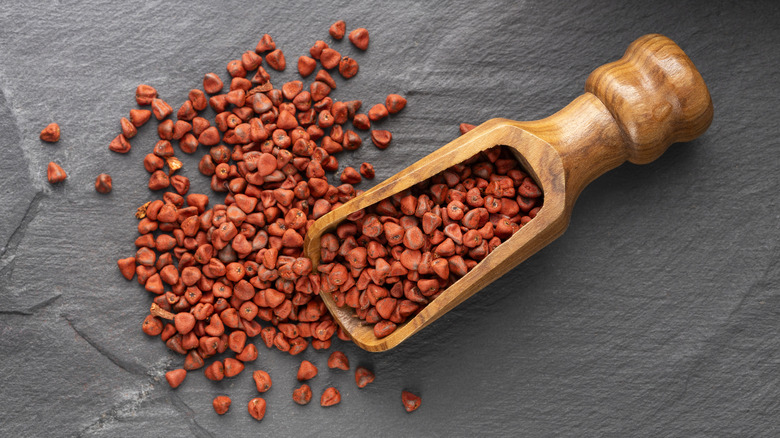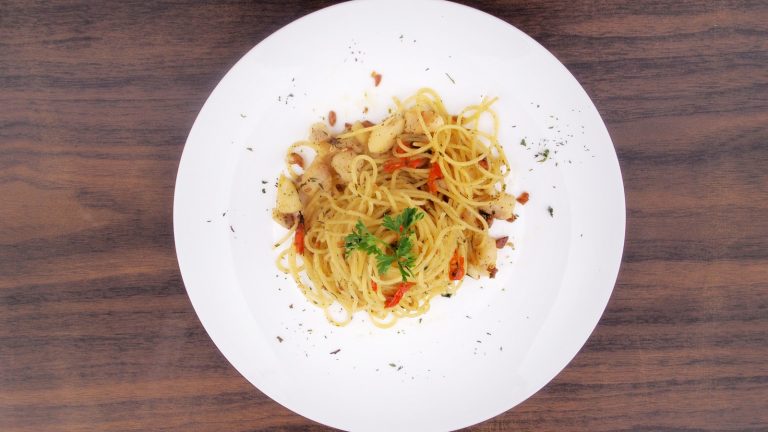While many Mexican spices and herbs can be easily found in any supermarket, you may want to make a detour to find one specific spice paste. It’s called achiote, and it’s a key ingredient for Yucatán-style cochinita pibil (barbecued pork) as well as the pork in tacos al pastor. You could argue al pastor is a fusion food rather than a Mexican one since it originates from the shawarma that Lebanese migrants made, but that’s another story. It’s also a key ingredient in the seasoning mix sazón (other ingredients include MSG for an umami hit, cumin, coriander, garlic, and onion), which is popular in several Latin American cuisines.
Achiote paste is made with the ground seeds of the annatto tree, which is native to tropical areas of Mexico and the Caribbean, but it’s now grown and used in other parts of the world. It adds a vivid red color to food, as well as a unique, part-bitter, part-peppery flavor that’s also a little bit nutty and earthy. It’s enhanced by sour ingredients, especially citrus. Achiote is available as both a paste and a powder. The paste is considered to add more flavor, but it requires refrigeration and doesn’t last as long (it should still keep for a few months).
How to use achiote
Achiote is, frankly, a pretty versatile spice. Having traveled around the world, it’s more than just a taco ingredient. It appears in Southeast Asian dishes and various Caribbean meals, too. But, since we’re talking tacos, let’s stick to Mexico. It’s usually used in conjunction with other herbs and spices, not on its own. Cochiniti pibil, a tender, slow-roasted or barbecued pork, is a bit of an exception, with some recipes leaning mostly on achiote mixed with citrus juice to bring it to life. Ideally, you use bitter orange juice, but a mix of lime and regular orange juice works since it can be hard to find. Some recipes also add various spices and aromatics, such as cumin, cloves, garlic, and allspice.
If you’re planning a meaty taco meal, marinate the meat for a while beforehand. The marinade for tacos al pastor isn’t quite so centered around achiote, leaning substantially on chiles such as ancho and guajillo alongside cumin, oregano, and garlic. Make sure you leave a few hours for the meat to marinate, but don’t go overboard: There is such a thing as over-marinating meat.
These are hardly the only uses, though. Various sauces and stews also lean on achiote to add a peppery and earthy dimension. If you want to give your food a wonderfully deep orange or red color, achiote is also a great way to do it, and it’s historically been used for this purpose. If you use it sparingly, it’s not strong enough to affect the flavor either.






